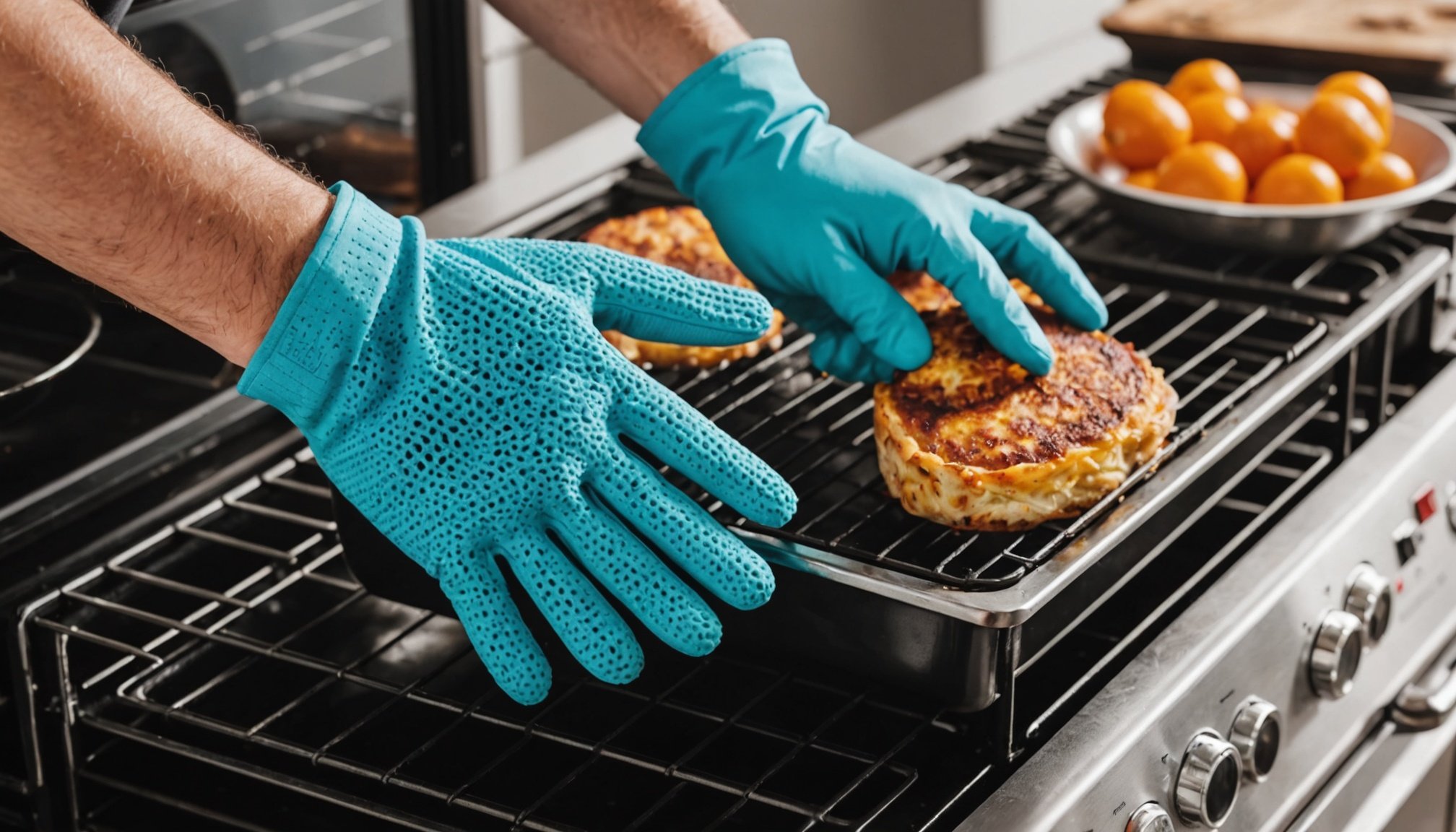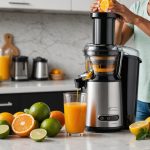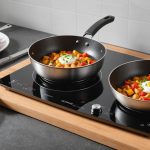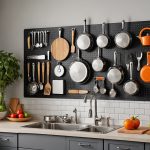Overview of Oven Glove Materials
Oven gloves are an essential kitchen safety item, primarily made from heat-resistant materials to protect your hands from burns. Choosing the right material can significantly impact the safety features and performance of these gloves. Here’s an overview of common materials used:
-
Silicone Oven Gloves: Silicone is renowned for its superior heat resistance. It’s not only excellent in preventing burns but is also flexible enough to handle hot pots and pans comfortably. Silicone offers great durability, making it a top choice for regular cooking enthusiasts.
Also to see : Ultimate Guide to Choosing the Best Material for Durable Cookie Sheets
-
Kevlar Oven Gloves: Known for its use in body armour, Kevlar is adopted in industrial-grade gloves due to its high heat protection. While robust and heat-tolerant, its weight and flexibility vary, offering a unique safety profile suitable for heavy-duty environments.
-
Cotton and Fabric Gloves: Favoured for breathability, these gloves offer a softer feel, prioritising comfort and user preference. While less durable against intense heat compared to silicone or Kevlar, cotton gloves are preferred for light cooking activities.
Also to discover : Discover the Best Juicer for Effortlessly Extracting Citrus Juice
Selecting the appropriate material boils down to balancing heat resistance, safety features, and user expectations, which are pivotal in ensuring effective hand protection during cooking tasks.
Silicone Oven Gloves
Silicone gloves are particularly popular due to their exceptional heat resistance, which allows for safe handling of hot kitchen items. Their ability to withstand high temperatures makes them superior in environments where heat protection is paramount, standing out in the market of oven gloves.
Heat Resistance Properties
Silicone oven gloves are highly regarded for their outstanding heat tolerance. This material can endure temperatures exceeding common cooking conditions, providing a reliable safety feature in various cooking scenarios. Compared to other materials like cotton, silicone presents a more robust barrier against heat, reducing the risk of burns significantly.
Durability and Maintenance
One of the key benefits of using silicone is its remarkable durability. This material is resistant to wear and tear, ensuring a longer lifespan compared to fabric alternatives. Maintaining silicone gloves is straightforward, as their non-porous nature prevents stains and odours from seeping in. Simple wiping or rinsing usually suffices to keep them clean, making them a practical choice for frequent users.
User Experience and Comfort
From a comfort perspective, silicone gloves offer flexibility and adapt well to different hand shapes. While some users might initially find them bulkier than cotton gloves, their utility in terms of heat resistance often outweighs this concern. Overall, silicone gloves meet the expectation for safety and comfort, crucial for efficient cooking engagements.
Kevlar Oven Gloves
When it comes to industrial use, Kevlar gloves stand out, offering unmatched high heat protection. Known for their robustness, these gloves are designed to handle extreme temperatures, making them ideal for high-heat environments. This section explores the key features that make Kevlar gloves a top choice for industrial and heavy-duty applications.
Heat Tolerance Levels
Kevlar gloves are renowned for their exceptional heat tolerance levels. They can withstand intense heat, often surpassing the protective threshold of many other materials. This makes them indispensable in environments where high heat exposure is inevitable, such as metalworking or glass manufacturing.
Weight and Flexibility
The weight and flexibility of Kevlar gloves are important factors to consider. While heavier than some alternatives, they provide a unique safety profile tailored for environments where durability is paramount. The flexibility varies, yet many users find them comfortable enough for prolonged use without compromising on safety.
Safety Ratings and Standards
Safety is a priority. Kevlar gloves often meet stringent safety ratings and standards, ensuring they provide reliable protection. Look for certifications that confirm these gloves’ ability to sustain high temperatures and resist cuts, offering peace of mind in challenging settings. Considering these aspects ensures informed decisions on safety gear.
Cotton and Fabric Oven Gloves
Cotton gloves remain a favoured choice among many due to their breathability. This material offers a comfortable experience, especially when lighter cooking tasks are involved. Generally, cotton performs adequately in heat resistance, though it doesn’t match the efficiency of Kevlar or silicone gloves. For those prioritising a softer feel and opting for low-intensity cooking, cotton can be a suitable option.
Insulation Properties
Cotton gloves provide basic insulation, protecting hands from moderate heat levels. While not as advanced as heat-resistant materials like Kevlar or silicone, they are satisfactory for quick kitchen tasks. Users typically select these for their comfort and light insulation.
Ease of Cleaning
Another advantage of cotton gloves lies in their ease of maintenance. They can often be machine washed, simplifying cleanliness and care. However, frequent washing may lead to wear over time, potentially affecting their longevity.
Fit and Comfort in Use
In terms of fit and comfort, cotton gloves excel. Their breathable and flexible nature allows them to adapt to different hand sizes easily. Users commonly appreciate the comfort and softness, factors that frequently influence purchasing decisions for those prioritising user preference.
Comparison of Materials
Choosing the right heat-resistant gloves involves understanding their properties across several fronts. This comparison focuses on three main materials: silicone, Kevlar, and cotton, each offering distinct advantages.
Heat Resistance is paramount. Silicone emerges as a top candidate, excelling with its ability to manage high temperatures effectively. Kevlar, known for industrial use, also withstands high heat but finds more niche applications where extreme temperatures are common. Cotton offers modest resistance, suitable for lighter tasks but not intense cooking.
Durability can significantly impact the lifespan of your oven gloves. Silicone leads due to its robust build, resistant to wear and tear. Kevlar, while durable, is more specialised for heavy-duty environments. Cotton, although comfortable, may wear faster, especially with frequent washing.
Comfort is another vital factor. Cotton gloves excel in this department, offering breathability that appeals to users seeking a soft feel. Silicone, while slightly bulkier, adapts well to hand shapes. Kevlar provides reliable protection but might not prioritise comfort.
In summary, the best choice depends on specific needs—silicone for heat and durability, Kevlar for industrial protection, and cotton for comfort in lighter tasks.
Expert Opinions and User Reviews
In evaluating oven gloves, insights from both experts and users provide a comprehensive view. Experts recommend evaluating heat-resistant materials for their implications on safety and performance. Material choice is critical, particularly when considering oven gloves used daily. Experts often place silicone gloves at the forefront due to their heat resistance and durable traits.
Interviews with Industry Experts
Specialists in kitchen safety assert the importance of choosing gloves tailored to specific uses. Silicone is praised for its robustness, especially in domestic settings, where occasional high-heat exposure occurs. Kevlar is often cited as the go-to for industrial pursuits requiring high heat protection, given its demonstrated reliability at elevated temperatures.
Summary of User Feedback
User reviews frequently highlight the comfort and breathability of cotton gloves, aligning with those preferring a softer feel. However, durability remains a concern. Conversely, silicone gloves receive accolades for heat resistance, though usability in terms of comfort can be divisive. Kevlar garners attention for its performance in demanding conditions.
Recommendations for Best Products
For those seeking top picks, consider silicone for its balance of performance and convenience in home settings. Cotton suits those prioritising feel and user preference. For industrial applications, Kevlar’s unmatched heat tolerance makes it a valuable option. Choosing the best product often hinges on specific needs and safety features.











